The new JMS-Q1600GC UltraQuad™ SQ-Zeta is JEOL’s sixth-generation high-end Gas Chromatograph Quadrupole Mass Spectrometer (GC-QMS) which is founded on JEOL’s 50 years of MS technologies and expertise.
The SQ-Zeta is the best general-purpose GC-MS with high-performance abilities for an extensive range of analysis and measurement requirements, from quantitative applications like water quality control, environmental samples, and agrochemicals, to qualitative usages like aroma and materials analyses.
Features
Excellent dynamic range and high sensitivity
IDL <5 fg
Eight sequential measurements of 20 fg of octafluoronaphthalene (OFN) were done with the help of a standard EI ion source.
The instrument detection limit (IDL) is calculated based on the peak area and reproducibility of the extracted ion chromatogram for the molecular ion. An IDL of 2.6 fg was achieved for the system.
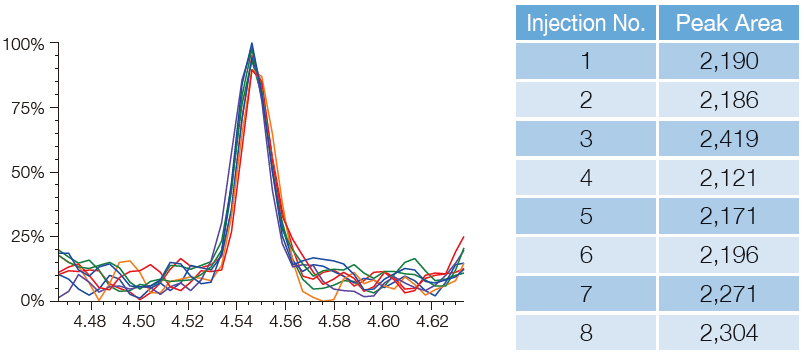
Image Credit: JEOL USA, Inc
Wide Dynamic Range
At concentrations ranging from 0.005 to 1,000 pg / uL, OFN was measured by using SIM mode with the standard EI ion source. With a coefficient of determination of 0.999 or better, a calibration curve with good linearity was attained. A vast dynamic range of over five orders of magnitude is valuable for both quantitative and qualitative analysis of complex mixtures with varied concentrations.
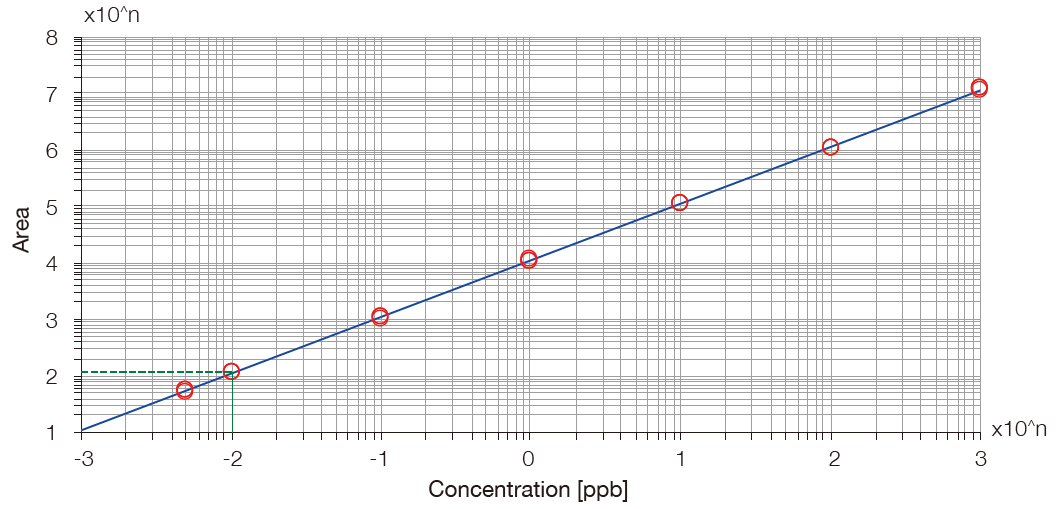
Image Credit: JEOL USA, Inc
Enhanced Performance Ion Source (EPIS, option): IDL <1 fg
The EPIS provides the maximum in-class sensitivity in the industry using an instrument detection limit of <1 fg (OFN 5 fg, eight measurements). Consequently, the EPIS provides different advantages such as:
- Simplification of sample concentration analysis, reduction of sample introduction volume (decreasing the contamination)
- Trace-level quantitative analysis
- Replacement of the quantitative measurement method from SIM to SCAN (simplification of measurement condition, non-target analysis possible)

Image Credit: JEOL USA, Inc
The EPIS can be used for both quantitative and qualitative analysis.
With an EPIS ion source, eight sequential measurements of 5 fg of octafluoronaphthalene (OFN) were done.
The instrument detection limit (IDL) is calculated based on the peak area and reproducibility of the extracted ion chromatogram for the molecular ion. An IDL of 0.6 fg was achieved for the system.
Photoionization EI/PI Combination Ion Source (Option)
Photoionization (PI), a soft ionization approach, employs a vacuum ultraviolet (VUV) lamp. The EI/PI combination ion source facilitates not only EI (Hard ionization) but also PI (Soft ionization) without eliminating the ion source. All that is needed to switch from EI to PI is to turn ON the PI lamp and turn OFF the EI filament or vice versa.
Features
- No need to break vacuum
- No need to replace the ion source
- Primarily for qualitative analysis
- No need for reagent gases
Py/GC-MS Measurement Result of Polystyrene Foam
Aromatic hydrocarbons, which strongly absorb UV light, are favorably ionized by PI, leading to high sensitivity detection of their molecular ions.

Schematic of EI/PI Combination Ion Source. Image Credit: JEOL USA, Inc
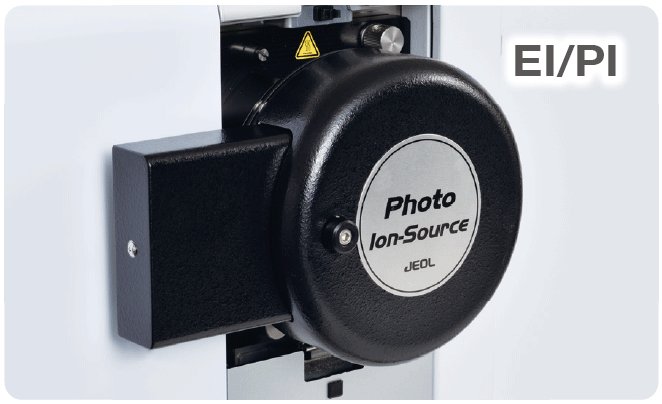
Image Credit: JEOL USA, Inc
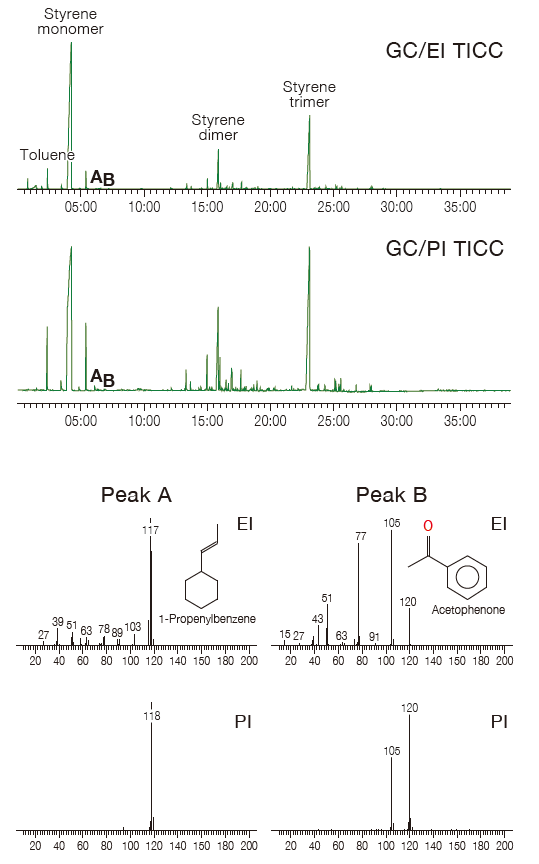
Image Credit: JEOL USA, Inc
Integrated Qualitative Analysis Software “msFineAnalysis iQ”
Users can break free from qualitative analysis based on library search alone. Combining EI and soft ionization data makes a higher level of qualitative analysis possible.
Depending on the much-admired msFineAnalysis software for GC-TOFMS, the new msFineAnalysis iQ extends this combined qualitative analysis ability into GC-QMS data analysis.
This software is able to automatically combine library search results from the EI data with molecular ion information from the soft ionization data. It then reports the results in a color-coded table. This combination of EI and soft ionization results in improved accuracy for identifying unknowns compared to relying on library database searches alone.

Work Flow of Integrated Analysis. Image Credit: JEOL USA, Inc
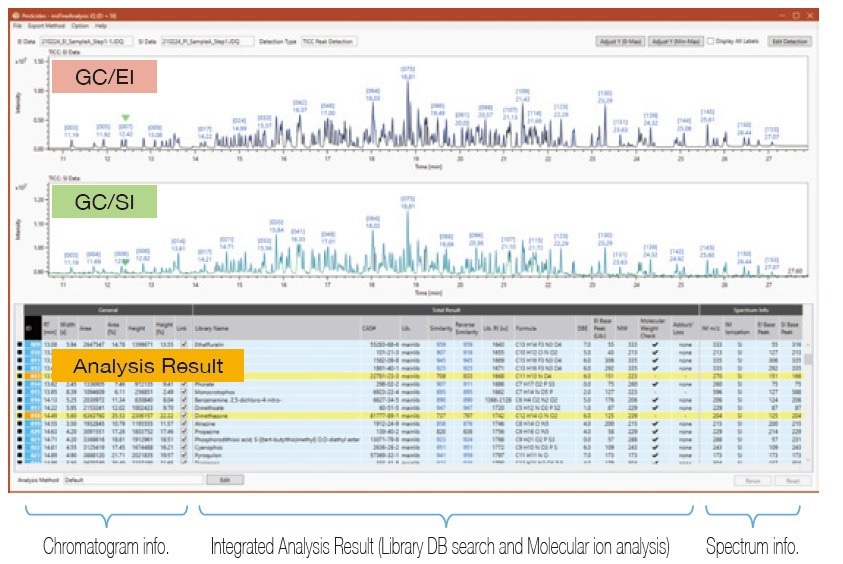
Integrated Analysis Result Window. Image Credit: JEOL USA, Inc
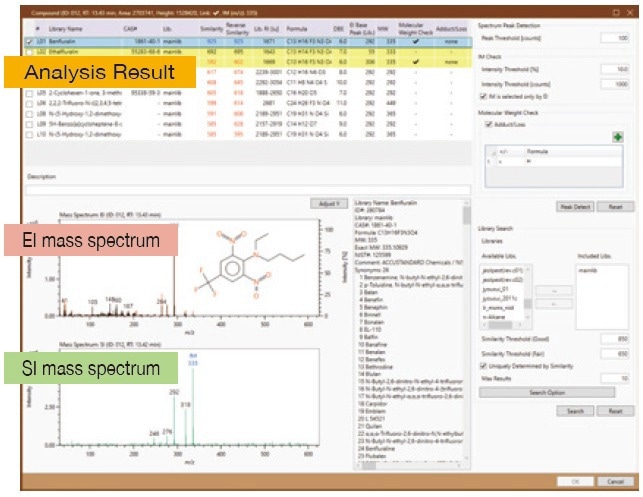
Individual Analysis Window. Image Credit: JEOL USA, Inc
msFineAnalysis iQ executes the below steps automatically:
- Peak detection (deconvolution peak or TIC peak detection)
- Link of EI and SI data (link)
- Library search (EI)
- Molecular ion search (SI)
- Library search result (EI, SI integration)
- Integrated analysis result
Employing SI and EI combined with msFineAnalysis iQ offers a greater level of qualitative analysis outcomes than depending only on database searches.
※ msFineAnalysis iQ is optional software